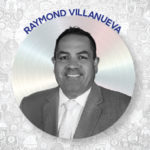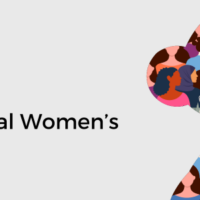
Financial crime compliance professionals know that law enforcement (LE) plays a vital role in investigating and capturing financial criminals. Ten years ago, ACAMS Today set out to honor LE in a special way—by dedicating an issue to this community. Thus, every June-August issue of ACAMS Today covers the many aspects of financial crime LE touches.
To celebrate the 10th LE edition, ACAMS Today reached out to the following five influential LE figures to discuss the LE landscape of the past decade, how to improve public-private partnerships and more:
- Steve Gurdak, CAMS, group supervisor for the Washington Baltimore High Intensity Drug Trafficking Area’s (HIDTA) Northern Virginia Financial Initiative (NVFI) and faculty member at George Mason University
- Stacey Ivie, detective for the Alexandria Police Department and task force officer for the Washington Baltimore HIDTA’s NVFI
- Sergeant Lepa Jankovic, CAMS, team leader for the Royal Canadian Mountain Police anti-money laundering (AML) unit
- Dennis M. Lormel, CAMS, founder and president of DML Associates, LLC. and former FBI agent of 28 years
- Raymond Villanueva, special agent in charge for Homeland Security Investigations (HSI) in Washington, D.C.
ACAMS Today: How has the LE field changed in the last decade?
Steve Gurdak: There is little question that technology has changed a lot of things. From residences to businesses, there are few industries where our activities are not being tracked or documented by some type of video or other electronic verification. In the LE field, from the routine patrol officers to veteran detectives, this development redefines investigative practices and schemes. Finding a balance of what can be done and what resources are available to do it is a challenge that is constantly evolving and changing.
Stacey Ivie: With the rapid evolution of digital currencies and electronic financial transactions as well as the emerging criminal trends associated with this progress, the LE field is in a constant state of “catch up.” Fiat currency-related crimes have designated proven investigative methods that address such crimes and satisfy the elements of the laws on local, state and federal levels. However, non-fiat currency-related crimes do not necessarily allow an investigative model that can be replicated across the board and the interpretation and treatment of these crimes currently differs between the two basic levels of the U.S. legal system.
Lepa Jankovic: The industry has seen an increased use of technology, which has moved front-line policing in the direction of online policing.
Social media has been a tremendous asset for investigations
Dennis M. Lormel: The continued evolution of technology has caused the continued evolution of LE in two dimensions. Technology has enabled criminals to exploit the internet through the full gamut of cybercrimes. Criminals have taken advantage of the speed and sense of anonymity afforded by the internet. They have also taken advantage of social media platforms to identify and target potential victims. At many ACAMS events where there are LE panels, LE representatives will state that their biggest challenge is anything cyber-related. Conversely, technology affords LE great investigative tools. Many search engines and analytical capabilities greatly facilitate LE investigations. Likewise, social media has been a tremendous asset for investigations, especially in active shooter and terrorist incidents such as the Boston Marathon bombing.
Raymond Villanueva: This is an interesting question and a topic of ongoing discussion in our profession. One of the most significant changes is certainly the fast and constant evolution of technology. This environment requires LE officers to learn new investigative techniques, including information technology (IT) proficiency and awareness, to keep investigators ahead of emerging trends. Back in 2010, we were talking about IT changing the LE landscape. Since then, I believe that LE has adapted well to these changes and appreciates these emerging technologies.
As far as the profession itself, these IT changes continue to make crime borderless. There has been a growing need to collaborate and expeditiously share information with key partners all over the world. What looks like a local crime today can turn regional, national and international in just a matter of seconds.
Lastly, and perhaps one of the greatest positive changes, this environment has given LE the space to innovate. LE is dynamic; every case is different and every case requires a different set of tools, unique at times, to solve the paradigm. In an effort to be as timely and responsive as possible, LE agencies are finding and creating new solutions leading to innovative ways of fighting crime and supporting investigators in addressing known or emerging vulnerabilities. To that end, HSI is at the forefront, giving some special agents with unique skillsets the freedom to experiment and build in-house IT tools to address different problem sets via the HSI Innovation Laboratory.
AT: From your perspective, what will be the main challenge financial crime compliance professionals will face this year?
SG: Reaction time. The tech world has been very successful in fulfilling legitimate businesses’ quest to move money more rapidly. However, the illegitimate world has always exploited this tendency to further their money laundering and fraud schemes. In addition, existing and traditional filing deadlines or cumbersome compliance decision processes will fall behind in addressing many AML and fraud concerns. Therefore, the 9-to-5 compliance model will also require a 24/7 rapid response component.
SI: Given that digital currencies and electronic transactions are intangible, fluid, rapid and oftentimes international, LE will need to collaborate early and often with financial institutions (FIs) to be able to intervene, seize and/or execute an arrest in a prompt fashion. Failure to do so can contribute to an increase in victimization and criminal statistics.
LJ: Bridging the gap between LE and the financial sector while managing compliance and privacy requirements is not only a challenge but a necessity. To fight financial crime, stakeholders need to work together in real time. It is not enough to identify suspicious transactions. Once there is a coordinated effort, compliance professionals should benefit from the authorities’ ability to investigate. It’s important to find support for leaders in the industry—such as Stuart Davis, global head, financial crimes risk management at Scotiabank—who are working on bridging this gap. It requires participation from partner agencies and legislative representatives.
DML: If it were not for the coronavirus pandemic, I would have opined that cyber fraud would be the greatest challenge. Unfortunately, the pandemic has become our greatest domestic and international challenge from both a health perspective and a financial crime perspective. Hopefully, we will get out in front of health issues and this will be a short-term health crisis. Regrettably, there will be significant long-term financial crime consequences as a result. In the early stages of this crisis, we were inundated with a variety of fraud schemes adapted to the pandemic. Schemes ranged from fake cures, fake charities, counterfeit treatments and equipment, to email phishing schemes. As bad as the myriad of these types of fraud schemes are, they pale in comparison to the tidal wave of fraud we will be drowned with when the $2 trillion relief package trickles down to the public and to those who truly need the relief assistance. I fear that billions of dollars will be siphoned off by fraudsters circumventing any vestige of controls to score an easy illicit payday. This is going to be a major crime problem, worse than what we experienced in 2008 when Congress passed the Troubled Assets Relief Program (TARP), the $700 billion bank bailout from the financial crisis.
RV: One of the top challenges all AML processionals will continue to face is information sharing. With the broader access to cyber platforms, money laundering methods that used to take weeks can now be performed in seconds, including international transactions. Therefore, there is a need to develop innovative solutions for sharing financial information across international boundaries faster and more efficiently. This, of course, must include enabling new legislation and processes beyond what we have today.
AT: What can financial crime compliance professionals do to improve partnerships at both the national and international level?
Take initiative and reach out to LE more often
SG: Take initiative and reach out to LE more often. My, and may I reiterate my, experiences have been that while an FI’s AML compliance sector is a significant element in those institutions, the comparative sector of overall LE dedicated to this sector could be greater.
Compliance professionals should not be timid about approaching LE and informing them of the extensive efforts put into AML for their benefit. LE would care about more AML and suspicious activity report (SAR) cases if it was properly explained why such cases merit their attention. If you have such a case, do not simply file without any follow-through.
SI: Under 12 CFR § 208.62 (d), the code specifies: “In situations involving violations requiring immediate attention, such as when a reportable violation is on-going, the financial institution shall immediately notify, by telephone, an appropriate law enforcement authority and the [Office of the Comptroller of the Currency] Board in addition to filing a timely SAR.” When ongoing reportable violations are concurrently reported to the appropriate LE authority, this public-private collaboration increases the odds of disrupting and/or dismantling criminal activity. This proactive alliance is not confined to U.S. borders and it can—and more importantly should—be expanded to our international partners.
LJ: The financial industry should invest in resources for identifying financial crime in order to improve coordinated efforts with LE and achieve greater outcomes. Building a framework that would optimize the end use of SARs would ensure that FIs’ efforts focus on LE’s strategic priorities. An enhanced SAR framework, which includes investigation-specific public-private partnerships, would allow stakeholders to work more effectively in identifying financial intelligence that moves criminal investigations forward.
DML: I have been a proponent for partnerships dating back to when I first joined the FBI in 1976. The key to developing and maintaining partnerships is understanding. You have to understand the perspective of your prospective partner. For example, my perspective as an LE officer was to build a prosecutable case. The perspective of compliance professionals is to protect the integrity of their institutions. Sometimes those perspectives do not align. By understanding the perspective of your partner, you can avoid potential conflicts and identify a middle ground that has a good case scenario for each partner, thus developing a win-win relationship. This positions you to establish meaningful and sustainable partnerships. There is no better example of this model than the post-9/11 partnerships developed by the governmental interagency community and the private sector. This is the same model we will require to fight the long-term coronavirus fraud problems.
RV: We need to understand each other’s legal frameworks and know whom the AML key stakeholders are in each region of the world to ensure we are engaging with the competent authorities that have jurisdiction over the matter at hand. The more we understand our distinct roles within the AML continuum, the better position we will be in to manage and mitigate risk for our FIs, have proper oversight roles as regulators, and investigate and prosecute any criminal allegations as a result of these joint efforts. I would ask everyone to lean forward and to engage proactively with their key stakeholders to learn about potential partnering opportunities, unique programs and legal mechanisms available with keen emphasis on how to leverage those to combat criminal networks. To that end, HSI developed an aggressive outreach and partnering initiative known as the Cornerstone Program. Cornerstone is the primary outreach mechanism for HSI’s financial investigations equities. HSI builds partnerships by sharing LE typologies and methods with the businesses and financial entities that manage the systems terrorists and criminal organizations seek to exploit. HSI subject-matter experts are designated as field Cornerstone representatives to provide training to the private sector and AML stakeholders on how to identify and prevent exploitation by criminal organizations.
AT: What is the most unique case you have worked on?
SG: There always seem to be some unique characters when you follow the money. I’ve profiled a number of them in the articles I’ve written for ACAMS Today over the years.
One that was fascinating to me was a genuine money hoarder, a true miser. When we went to talk to him about his suspicious cash deposits, he was living in squalor in one room in a dilapidated rooming house. The dust on things in the room was decades thick. He had an unwashed and unkempt homeless-like appearance, but otherwise was very lucid.
As it turned out, he had a net worth exceeding $30 million and the rooming house was just one of over 40 rental properties he owned. Although he held a master’s degree in economics, his onset of obsessive compulsive disorder that began manifesting about 20 years prior led him to save and hoard money. As part of this disorder, he never considered spending any of the money on himself and he never considered paying taxes on any of the money. He agreed to receive psychological aid as part of the resulting plea agreement. Although not part of the plea, he also donated a lot of his money to charity.
SI: I had the privilege to collaborate with local, federal and international LE agencies as well as private sector companies to charge a six-count criminal information successively (access device fraud, aggravated identity theft, wire fraud, etc.) against a perpetrator. The scheme included obtaining fraudulent credit cards, stolen personal identifying information, a franchise investment scam, false contract with a foreign government, improper national security access and more. It truly was a “catch me if you can” experience with a Hollywood ending.
LJ: In 2010, I had the opportunity to lead an international human trafficking investigation named Project OPAPA that identified dozens of male victims exploited in the labor field. While faced with challenges in moving this case forward, I worked with my crown prosecutor and created a strategy to conduct the investigation as a fraud case. Documents and bank records opened by the traffickers for the victims became the evidence of the victims’ exploitation. The massive fraud scheme enacted by the criminal organization against Canadian FIs and generous social services became a focal point of this investigation, which led to convictions of organized crime for the purposes of human trafficking and fraud. This investigation was my first insight into financial crime playing an integral role in a criminal investigation. It spoke volumes to the old saying, “follow the money.”
DML: During my career, I was blessed to have been in positions where I worked a number of memorable cases ranging from the Bank of Credit and Commerce International (BCCI) bank failure, to congressional and judicial corruption, to child abduction cases. Many of those cases were unique and will be remembered fondly. The most unique and important case I participated in was the investigation of the 9/11 terrorist attacks. On 9/11, I was chief of the FBI’s Financial Crimes Program. In the immediate aftermath of the attacks, I had the privilege of being in the unique position of developing and leading the financial investigative plan for the 9/11 investigation. The plan was a two-pronged approach to the broader terrorist financing problem. The first prong was the short-term goal of identifying the financing for the 9/11 attacks. The second prong was the long-term goal of establishing a template for future terrorist financing investigations. The most rewarding and memorable aspect of this experience for me was having had the honor of working alongside the extremely dedicated agents and analysts who successfully implemented our two-pronged plan.
RV: As a 27-year-LE veteran at the state and federal level, I have worked many cases as a working agent, supervisor and senior manager. Many of these cases really marked my life; they ranged from domestic disputes, child exploitation, narcotics, organized and transnational crime, and certainly money laundering cases. However, something that drove the point of changing environments home for me was a case where we were targeting a high-scale drug dealer that was heavily conducting business via the dark web. As an older LE officer, I had envisioned this individual to be a ruthless trafficker, very much like a cartel boss. I thought he was making lots of money selling narcotics, laundering his proceeds in many ways, posing challenges to the entire AML community and then using the laundered proceeds to acquire goods and services, like a new Pablo Escobar. To my surprise, we were targeting a very sophisticated drug dealer and money launderer, but unlike my imagined cartel boss, he was a very young kid working and living out of his parents’ home; there was nothing ruthless about him. However, he was an extremely smart and IT-savvy individual that used his talents for ill gain. While his is not the only one of these cases we have seen, it really did demonstrate how much the LE environment has changed. This individual barely had any contact with other people and he did not conduct financial transactions in what we call the traditional way.
AT: Could you please share your favorite quote?
SG: When you investigate the financial side of crime, you learn Bob Dylan was on point when he said, “Money doesn’t talk, it swears!”
SI: I do not know who coined the following phrase but I could not agree more with it: “10% of the people do 90% of the work.”
LJ: One quote that resonates with me, particularly in terms of my field, is “online is the new front line.”
DML: “It’s easy to criticize but hard to distinguish.” I wrote that quote in an article supporting a good friend who was unjustly criticized by the media. What struck me was that those who criticized were good at criticizing and did little to distinguish [themselves]. On the other hand, my friend quietly distinguished himself every day without criticizing anyone. I use this quote frequently when I conduct training sessions. My thanks to everyone who distinguishes.
RV: As a kid growing up in a blue-collar, hard-working family, my dad always told me, “You can be anything you want to be in life, just remember that if you want to flip pizza, then work hard and own the pizzeria.” There is nothing wrong with flipping pizza; it was and still is my favorite food.
Be the best, own the moment and be proud of your work
What my dad meant with that quote is that it does not matter where you are in your life or in your career. Just be the best, own the moment and be proud of your work; the pizzeria will be yours.















